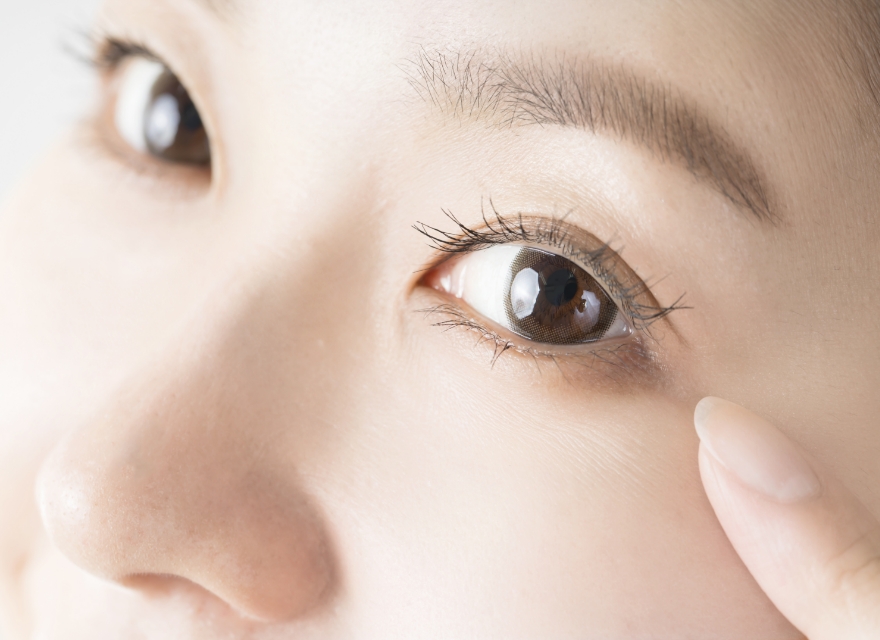- TOP
- PATIENTS AND GENERAL PUBLIC
PATIENTS AND GENERAL PUBLIC

Etiologies causing ocular surface diseases
Unexpected loss of vision leads to interference with the individual’s daily life and substantially changes the isubsequent life plan. For example, Stevens-Johnson syndrome (SJS) caused by drug adverse reactions, ocular pemphigoid (an autoimmune disorder), burns or chemical accidents, or various other diseases, can potentially lead to disorders that affect the ocular surface (including the eyelid mucosa or ocular surface mucosa). A condition of damage to the stem cells present on the ocular surface by these diseases or other factors is called a limbal stem cell deficiency. This damage may occur at any age and may cause tremendous anxiety in the patient and family members. Sakracy was developed for the treatment of adhesions on the ocular surface caused by a limbal stem cell deficiency.
Diseases potentially causing ocular surface diseases include the following:
-
Causative disease
-
Symptom
-
Stevens-Johnson syndrome (SJS)/Toxic epidermal necrolysis (TEN)
-
After taking medications or acquiring an infection, a high fever or skin or mucosal rashes develop. This autoimmune disease is very serious and life-threatening condition.
-
Ocular pemphigoid (OCP)
-
This disease is particularly common in elderly individuals. The patient’s own antibodies attack the patient’s body because of a problem with the immune system, resulting in the development of erosions to the mucous membranes of the eyes and other conditions.
-
Thermal/chemical injuries
-
These are burns or accidents, such as exposure of the eyes to chemicals.
-
Graft-versus-host disease (GVHD)
-
This disease may develop in patients who received a hematopoietic stem cell transplant (bone marrow transplant) for the treatment of leukemia. It is an immune disease in which the immune cells (lymphocytes) of the bone marrow donor attack the recipient’s body.
-
Recurrent pterygium
-
Pterygium is a condition in which the conjunctiva (a white part of the eye) extends onto the cornea (a black part of the eye) due to overgrowth of the conjunctiva. It can recur even if treated.
-
Ocular tumors
-
Some tumors can develop on the ocular surface, including the eyelid, conjunctiva, and lacrimal gland, and others can develop inside the eyeball, including the retina and optic nerve.
See these websites:
Approaches of Hirosaki LI
To contribute to patients and their families resuming their daily lives and leading lives full of smiles, our company promotes the practical use of novel regenerative medical technologies in medicine.
Regenerative medicine is a new technology by which human cells are used as materials to produce the organs and tissues for transplantation. Human-derived cells include the patient’s own cells, somatic stem cells, mesenchymal stem cells, and iPS cells generated from somatic cells. For all these types of cells, research and development aiming at realizing regenerative medicine are advanced by many research institutes.
Our company forms partnerships or conducts collaborative development with these research institutes for excellent regenerative medicine technologies in Japan. First, we approached in the field of ocular surface diseases. We worked in collaboration with the Department of Ophthalmology, Kyoto Prefectural University of Medicine, which had advanced a clinical investigation or a clinical study (Advanced Medical Care B program and investigator-initiated trial) for ocular surface disease caused by intractable diseases, and submitted the results of clinical study and and trials to the Ministry of Health, Labour and Welfare to receive approval of marketing authorization.

This enabled patients to receive this treatment* in hospitals. In addition, we will promote our business so that this medicine can be delivered to all patients in need of it.
*Human (autologous) oral mucosa-derived epithelial cell sheet using human amniotic membrane substrate (Product name: Sakracy)
Expanding the target disease fields is also one of our important goals. We also work not only on the regeneration of knee cartilage for the treatment of knee cartilage damage or knee osteoarthritis in the orthopedic field but also on the development of novel regenerative medicine technologies in the field of liver diseases, such as liver cell sheets.
Moreover, we always search for other new technologies. In the future, we will also continue to try to early provide innovative regenerative medical products to patients with these diseases and their families so that they can resume bountiful daily lives.
This page is lettered by large font size
